Experience Gwanghwamun at Night: Free Admission in Hanbok
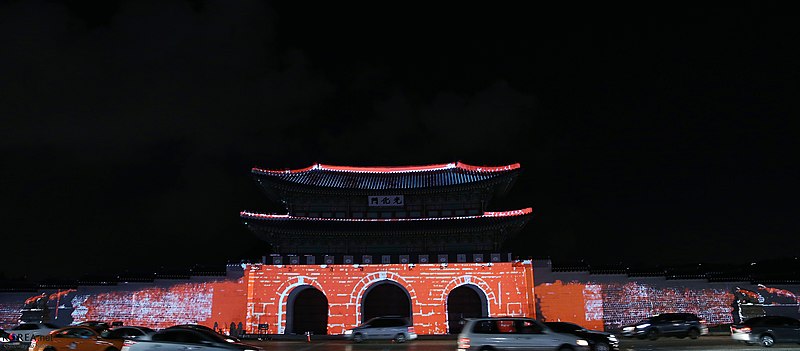
Gwanghwamun, the main and largest gate of Gyeongbokgung Palace in Seoul, offers a captivating experience, especially at night. If you’re planning to stay in Korea, a nighttime visit to Gwanghwamun should be on your itinerary. This article will guide you through everything you need to know to make the most of this enchanting experience.
The Magic of Gwanghwamun at Night

Gwanghwamun transforms into a mesmerizing sight when the sun sets. The gate, beautifully illuminated, creates a serene and magical atmosphere that invites visitors to explore its grandeur. The juxtaposition of ancient architecture against the modern Seoul skyline adds to its unique charm.
Free Admission in Hanbok
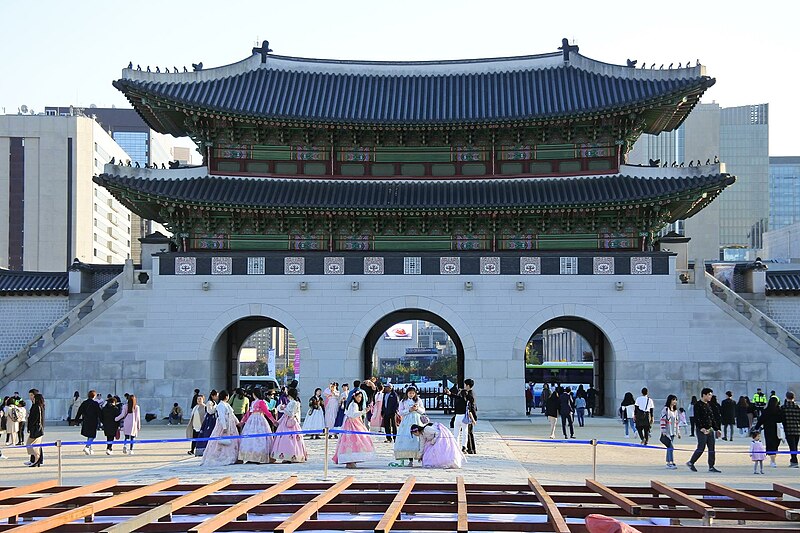
One of the most delightful aspects of visiting Gwanghwamun at night is the opportunity for free admission if you wear a hanbok, the traditional Korean dress. This policy not only encourages cultural appreciation but also offers a unique way to immerse yourself in Korean heritage.
Practical Tips for Your Visit
Renting a Hanbok
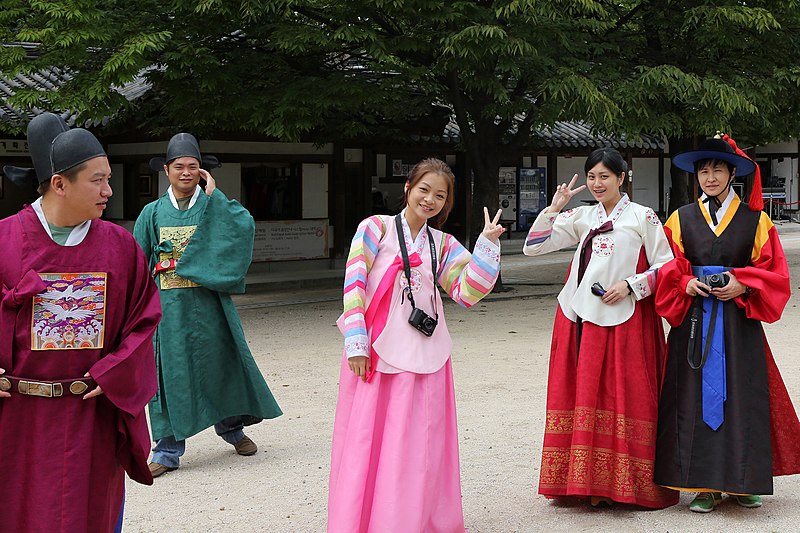
Renting a hanbok is easier than you might think. Numerous hanbok rental shops are located near Gyeongbokgung Palace. Prices range from 10,000 to 30,000 KRW, depending on the style and rental duration. Here are some tips to keep in mind:
- Choose a Comfortable Hanbok: Ensure that the hanbok fits well and is comfortable to walk in, as you will be exploring the palace grounds.
- Secure Your Belongings: Most rental shops provide lockers for your belongings, but it’s always good to carry a small bag for essentials.
Best Time to Visit
To fully appreciate Gwanghwamun at night, plan your visit around sunset. This timing allows you to witness the transition from day to night, enhancing the overall experience. Additionally, visiting during weekdays can help you avoid large crowds.
Respecting Local Customs
As you explore Gwanghwamun and Gyeongbokgung Palace, remember to respect local customs and cultural practices. Here are some guidelines:
- Follow Photography Rules: While taking photos is generally allowed, be mindful of areas where photography may be restricted.
- Respect Private Residences: Some sections of the palace are still used for official purposes. Respect any signs indicating restricted access.
Exploring Gyeongbokgung Palace
Gwanghwamun is the gateway to Gyeongbokgung Palace, one of the most iconic landmarks in Korea. Here are some key attractions within the palace grounds:
Geunjeongjeon Hall
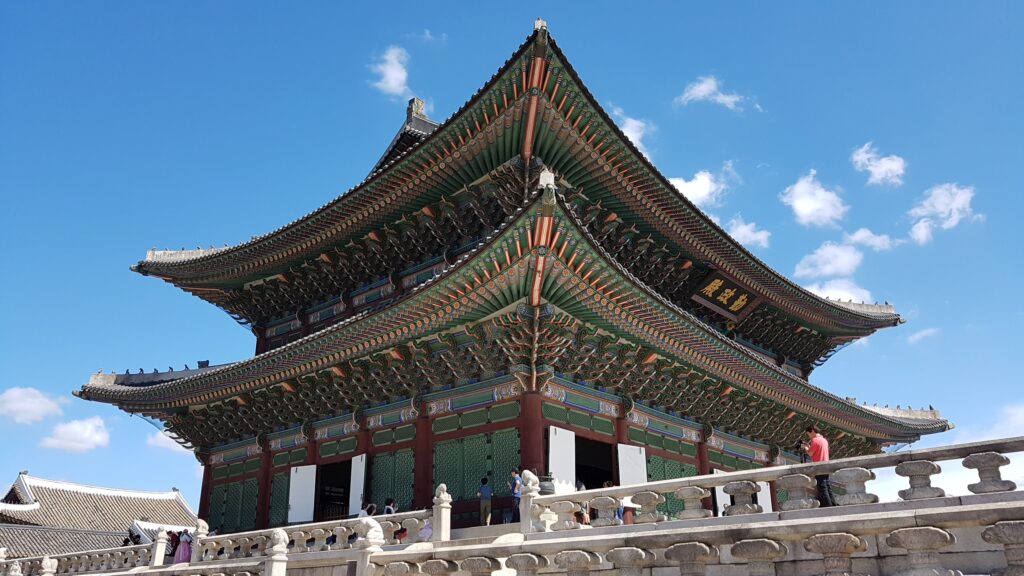
Gyeonghoeru Pavilion
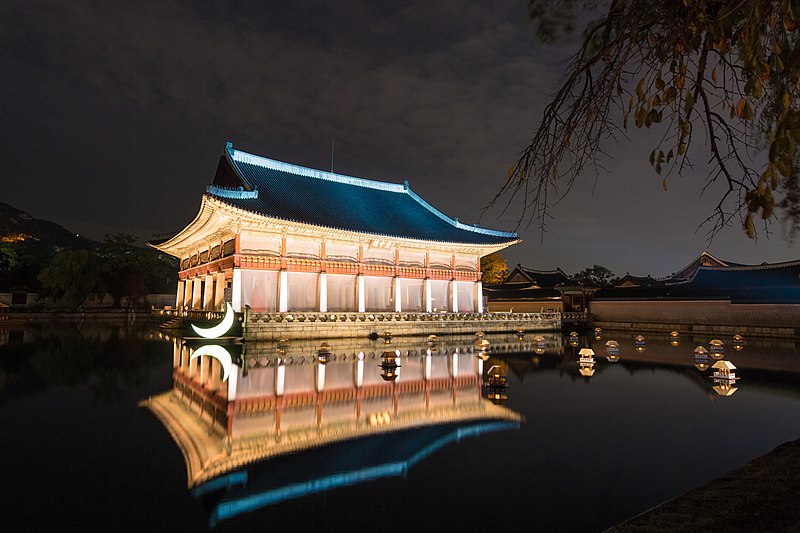
Gyeonghoeru Pavilion, surrounded by a tranquil pond, offers a picturesque setting perfect for evening strolls. The pavilion’s reflection in the water, especially under the night sky, creates a serene and beautiful scene.
Hyangwonjeong Pavilion
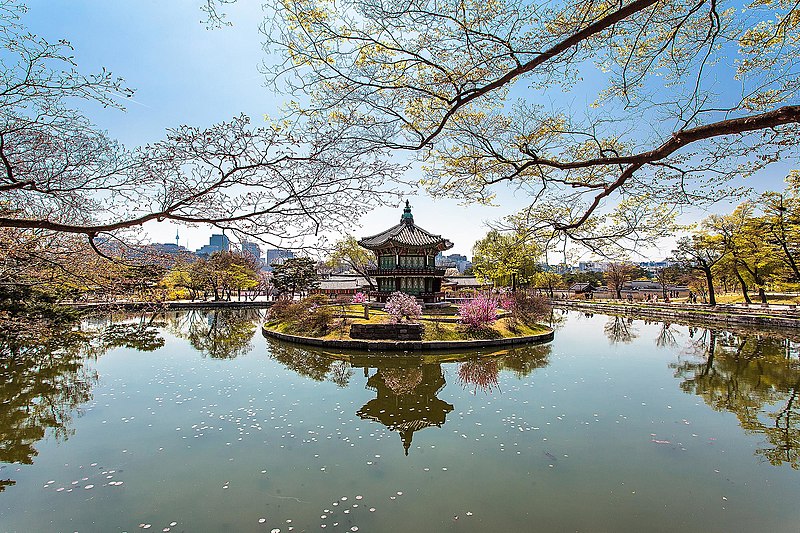
Hyangwonjeong Pavilion is another stunning spot within the palace grounds. This two-story pavilion, connected to the rest of the palace by a charming bridge, is an ideal place to take a moment and absorb the beauty around you.
Lesser-Known Attractions Near Gwanghwamun
While Gwanghwamun and Gyeongbokgung Palace are the main highlights, there are several lesser-known attractions nearby that are worth exploring.
Bukchon Hanok Village
Bukchon Hanok Village, located a short walk from Gwanghwamun, is a traditional Korean village with well-preserved hanok houses. The village offers a glimpse into Korea’s past and is a great place to wander through narrow alleys and appreciate traditional architecture.
Cheonggyecheon Stream
Cheonggyecheon Stream, an urban renewal project, is a beautiful stream that runs through downtown Seoul. The stream is illuminated at night, making it a perfect spot for a leisurely walk after your visit to Gwanghwamun.
Jogyesa Temple
Jogyesa Temple, the chief temple of the Jogye Order of Korean Buddhism, is located near Gwanghwamun. The temple’s serene atmosphere and beautiful lanterns make it a peaceful retreat in the heart of the city.
Additional Recommendations
To enhance your visit to Gwanghwamun and the surrounding areas, consider these additional tips:
Local Cuisine
Seoul is a food lover’s paradise. Near Gwanghwamun, you can find various traditional Korean restaurants offering dishes like bibimbap, bulgogi, and kimchi. Don’t miss out on trying street food from nearby vendors, such as tteokbokki (spicy rice cakes) and hotteok (sweet pancakes).
Guided Tours
For a more in-depth understanding of Gwanghwamun and Gyeongbokgung Palace, consider joining a guided tour. Knowledgeable guides can provide historical context and share fascinating stories about the palace and its significance.
Nighttime Events and Performances
Check the official Gyeongbokgung Palace website for any special events or performances happening during your visit. Traditional music performances and cultural events are occasionally held at night, adding to the magical experience.
Conclusion
Experiencing Gwanghwamun at night offers a unique and enchanting glimpse into Korea’s rich cultural heritage. By wearing a hanbok, you not only gain free admission but also immerse yourself in the tradition and history of this beautiful country. With practical tips and recommendations, you’re now ready to plan your visit and create lasting memories at one of Seoul’s most iconic landmarks.
Whether you’re an aspiring travel blogger or just someone looking to explore new destinations, Gwanghwamun at night promises an unforgettable experience. Respect the local customs, enjoy the breathtaking sights, and make the most of your visit to this historic gem in the heart of Seoul.
Looking for accommodation in Seoul?
Start with Stay Korea
Fill Out the Form Below to Get Started
The more info you share, the better we can match you!






















